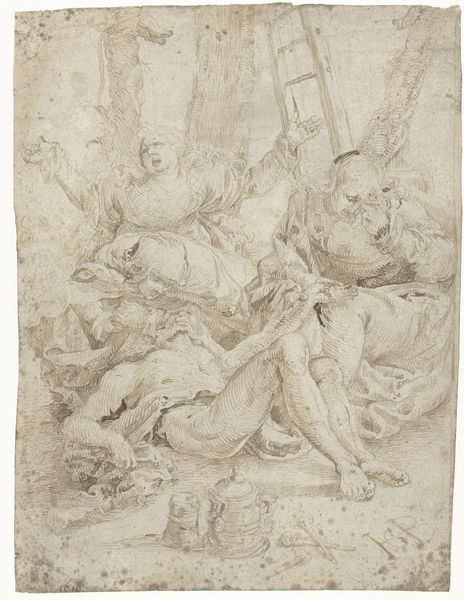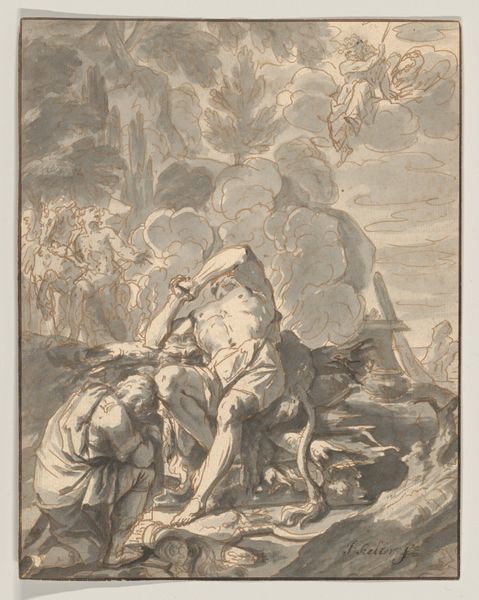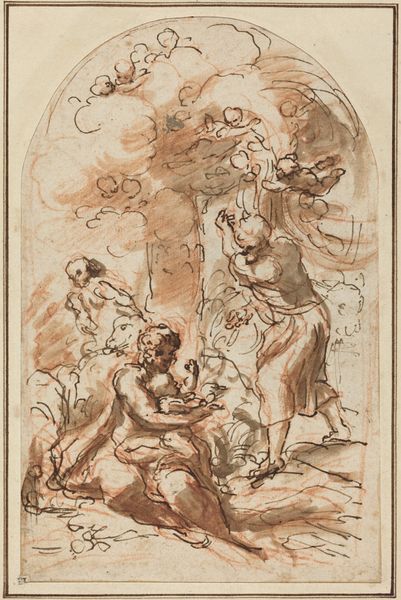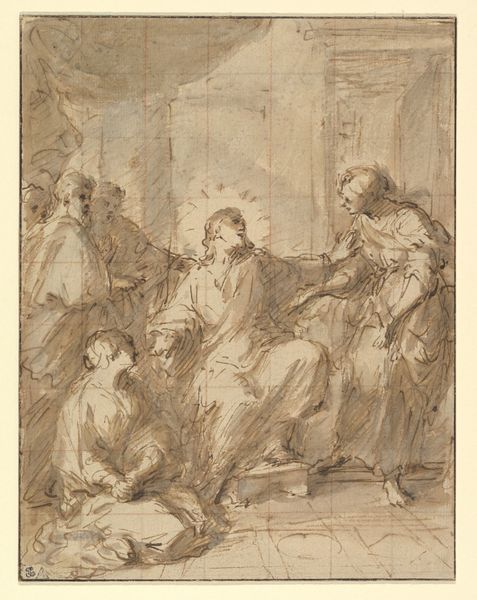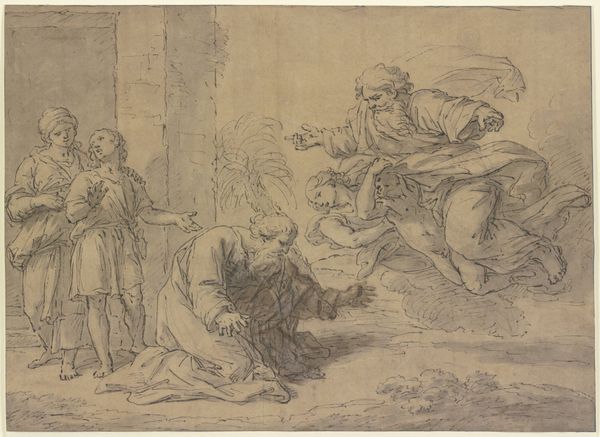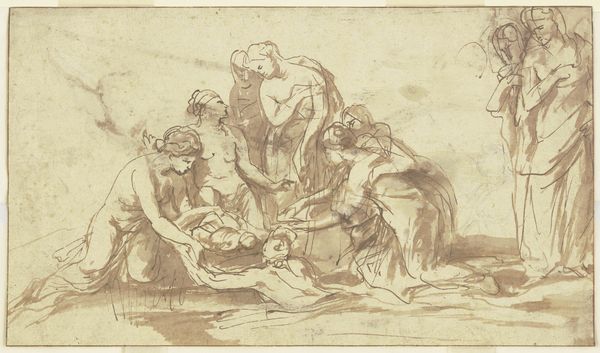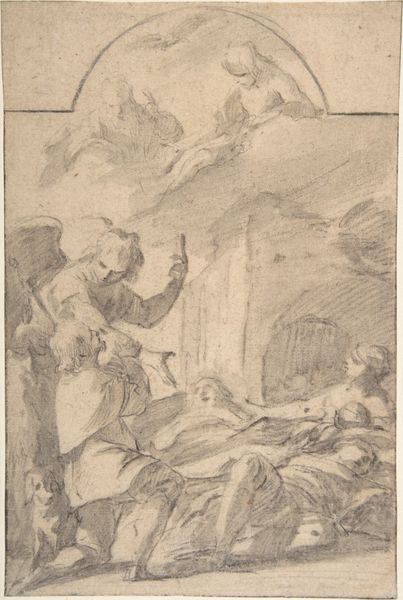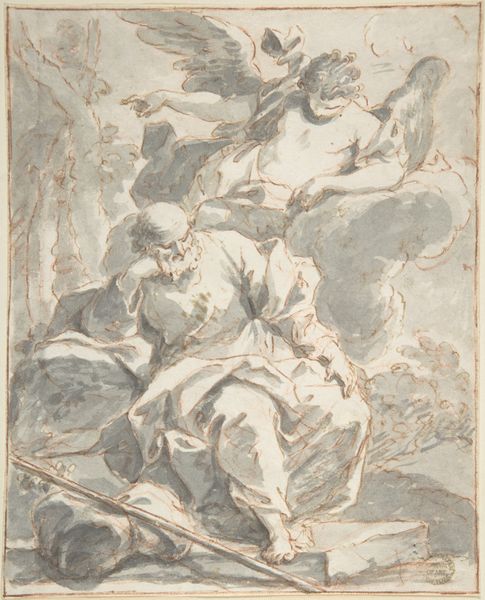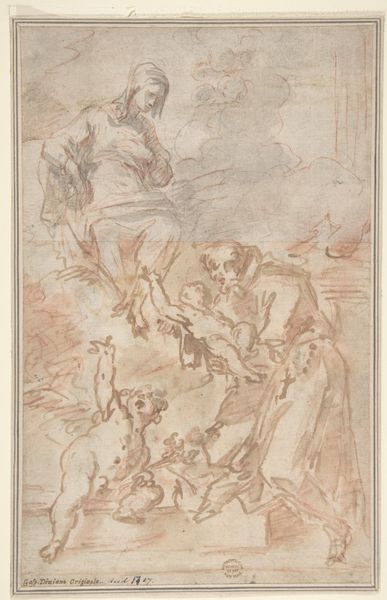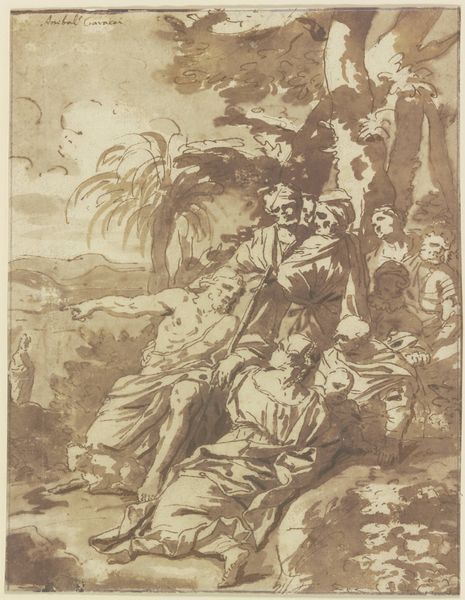
drawing, charcoal
#
drawing
#
baroque
#
charcoal drawing
#
figuration
#
line
#
charcoal
#
history-painting
Dimensions: 232 mm (height) x 198 mm (width) (Bladmål)
Editor: This drawing, "The Lamentation of Christ," by Giacinto Brandi, made with charcoal sometime between 1623 and 1691...it's quite moving. The use of charcoal creates a somber mood, very textured. What aspects stand out to you? Curator: As a materialist, I'm immediately drawn to the charcoal itself. What kind of charcoal was Brandi using? Was it readily available, or a luxury? These factors tell us something about the economics of art production in 17th-century Rome. Note too the paper; its weave suggests a certain social class that could afford this medium for what seems to be a preparatory sketch. How does this medium reflect the process and reception in Baroque workshops? Editor: That's fascinating. I never considered the charcoal itself as a factor. So, the kind of charcoal used provides clues to its historical context? Curator: Absolutely! It goes beyond mere aesthetics. Where did Brandi source this charcoal? Was he part of a larger network of artisans? And the act of drawing itself – the physical labor of applying charcoal to paper to convey emotion – that too deserves consideration. The rapid, gestural marks are themselves communicative of both grief, and, it can be argued, efficient and practical planning of space to plan his later painting. Do you see how his rendering is not about exact anatomy but about dynamic movement? Editor: I see! It's about the materiality of the process, and how that informs the meaning and social context. It prompts a more grounded perspective. It’s like viewing the artist's labour not just the divine subject! Curator: Exactly. Shifting focus from the subject of this piece—the religious iconography of the body of Christ— to the actual labor behind it can broaden art analysis itself. Instead of celebrating "divine" creation we look for “human” manufacture, placing value not just in what a thing represents but how a thing is materially and physically made. Editor: This changed my perspective; I appreciate that grounding in material analysis! Curator: And for me it is refreshing to return to the art object with a novice who still feels the grief expressed here in the image and also the human making the grief we see here in line and mark.
Comments
No comments
Be the first to comment and join the conversation on the ultimate creative platform.


